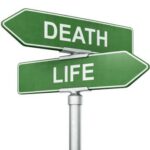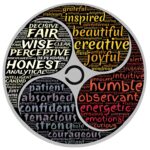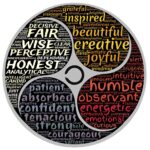Ideally, you should be living in the present while striving for your healthiest goals of, for example, meaning, happiness, love, success, and fulfillment. You should feel joy and inspiration. You should be optimistic and able to participate in thriving relationships. You should find satisfaction in your work, experience warm and loving family and friends, and participate in fun and meaningful hobbies and recreation.
Yet, if you could step back and look at your life, you may see that you are, in significant ways, living your life based on who you once were, not who are you now, still reacting to the world much as you did when you were a child. You may still avoid relationships because of a fear of rejection, be carrying a hair-trigger resentment toward authority, or be trying hard to please others rather than meeting your own needs for your own happiness. Why would you still be acting in ways that are no longer healthy or beneficial to you? Because many of those childhood experiences still control you.
You may feel like you are putting your past in front of you, letting it guide and shape who you are, how you feel, and what you do. Your life may be much less meaningful, fulfilling, or enjoyable than you would like. You can be pretty sure that your past is controlling you when emotions such as fear, frustration, anger, or sadness are more present than they are absent in your life. Your thinking tends to take a pessimistic cast and your behavior often undermines what you’re trying to accomplish. Your work is unsatisfying, you often feel lonely, and you really don’t have much joy in life.
Your life may be driven by many of the things that you worry about and fear: being loved or rejected, liked or shunned, accepted or judged, a success or a failure, happy or miserable, living up to others’ expectations or your own, conforming to the culture we live in or living in a world of your own choosing.
I call the causes of this unhealthy life path “mindblocks,” a portmanteau that plays off of the psychological nature of these issues and the term “roadblocks.” As much as you may want to or have tried, you just can’t seem to remove these mindblocks from your life. I have identified ten mindblocks that most prevent you from living the life you want:
- Compulsions
- False self
- Fear (and other bad emotions)
- Immaturity
- Dependence
- Being a human doing
- Self-sabotage
- Unhappiness
- Victimhood
- The past
You can see the presence of mindblocks in the attitudes and beliefs you hold about yourself and the world, the emotions that dominate your life, the relationships you have, and the decisions you make and the actions you take. You can get clues about which mindblocks are most prevalent in your life by looking at the work you do, the people you surround yourself with, the activities you participate in, and the routines that you follow. But the ultimate clue is whether you believe that you are living the life that want, a life that is dominated by passion, connectedness, and joy.
Think about the role that mindblocks plays in your life. They scare you, inhibit you, numb you, and limit you. Wouldn’t it be great to free yourself from these restraints? Okay, that might not be possible because you’re human and mindblocks are just a part of being human. But wouldn’t it be great to be on a life path that is predominantly free mindblocks rather than dominated by them? That is a worthy goal indeed.
In future posts, I’ll introduce you to the attitude that will help you dismantle your mindblocks and set you free to pursue the life you wish for most.






